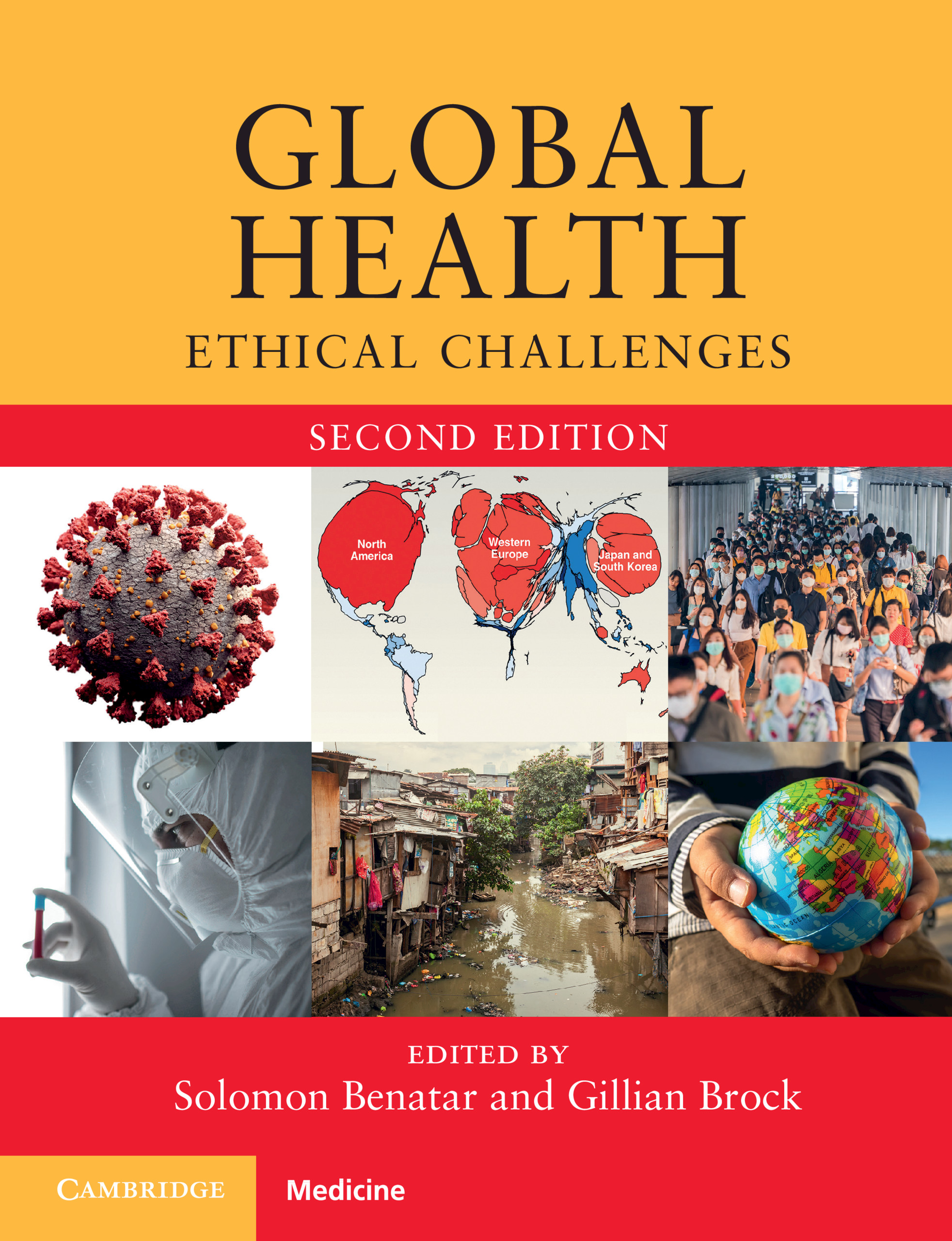Book contents
- Global Health
- Global Health
- Copyright page
- Contents
- Contributors
- Introduction
- Section 1 Global Health: Definitions and Descriptions
- Section 2 Global Health Ethics, Responsibilities, and Justice: Some Central Issues
- Chapter 6 Is There a Need for Global Health Ethics?
- Chapter 7 The Human Right to Health
- Chapter 8 International Human Rights Law and the Social Determinants of Health
- Chapter 9 Responsibility for Global Health
- Chapter 10 Bioethics and Global Child Health
- Section 3 Analyzing Some Reasons for Poor Health and Responsibilities to Address Them
- Section 4 Environmental/Ecological Considerations and Planetary Health
- Section 5 The Importance of Including Cross-Cultural Perspectives and the Need for Dialogue
- Section 6 Shaping the Future
- Index
- References
Chapter 8 - International Human Rights Law and the Social Determinants of Health
from Section 2 - Global Health Ethics, Responsibilities, and Justice: Some Central Issues
Published online by Cambridge University Press: 04 February 2021
- Global Health
- Global Health
- Copyright page
- Contents
- Contributors
- Introduction
- Section 1 Global Health: Definitions and Descriptions
- Section 2 Global Health Ethics, Responsibilities, and Justice: Some Central Issues
- Chapter 6 Is There a Need for Global Health Ethics?
- Chapter 7 The Human Right to Health
- Chapter 8 International Human Rights Law and the Social Determinants of Health
- Chapter 9 Responsibility for Global Health
- Chapter 10 Bioethics and Global Child Health
- Section 3 Analyzing Some Reasons for Poor Health and Responsibilities to Address Them
- Section 4 Environmental/Ecological Considerations and Planetary Health
- Section 5 The Importance of Including Cross-Cultural Perspectives and the Need for Dialogue
- Section 6 Shaping the Future
- Index
- References
Summary
In its proclamation that “social injustice is killing people on a grand scale,” the 2008 World Health Organization (WHO) Commission on the Social Determinants of Health (CSDH) squarely locates the achievement of global health equity within the realm of ethics, social justice, and human rights (WHO, 2008: 26). The report is explicit about the human rights aspect of this injustice, continuing that while “[t]he right to the highest attainable standard of health is enshrined in the Constitution of the World Health Organization (WHO) and numerous international treaties … the degree to which these rights are met from one place to another around the world is glaringly unequal” (WHO, 2008: 26). Links between human rights and the social determinants of health have been reiterated in subsequent global health policies, including the 2011 Rio Declaration on the Social Determinants of Health and the 2015 Sustainable Development Goals (SDGs).
- Type
- Chapter
- Information
- Global HealthEthical Challenges, pp. 122 - 135Publisher: Cambridge University PressPrint publication year: 2021
References
- 1
- Cited by



